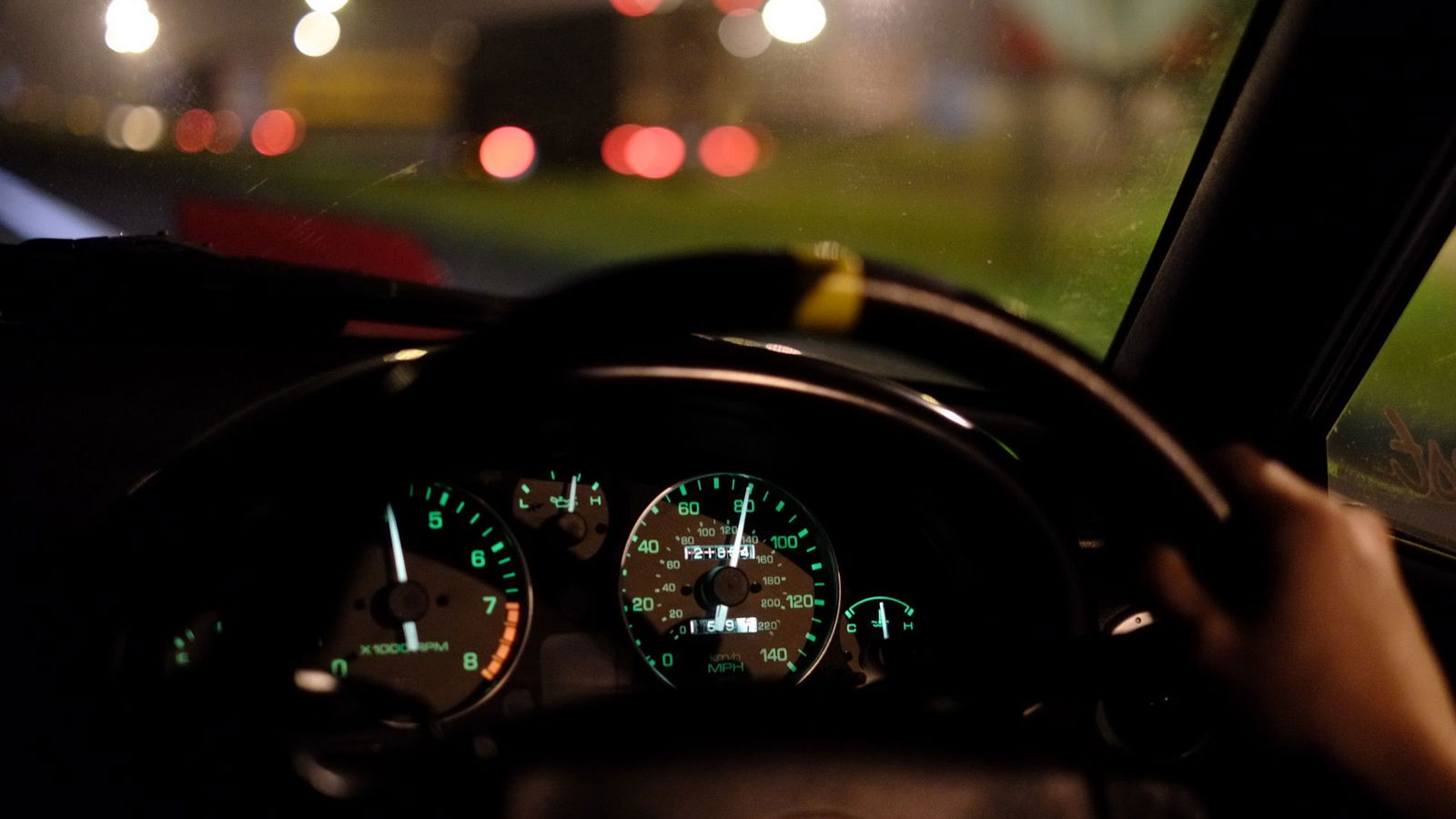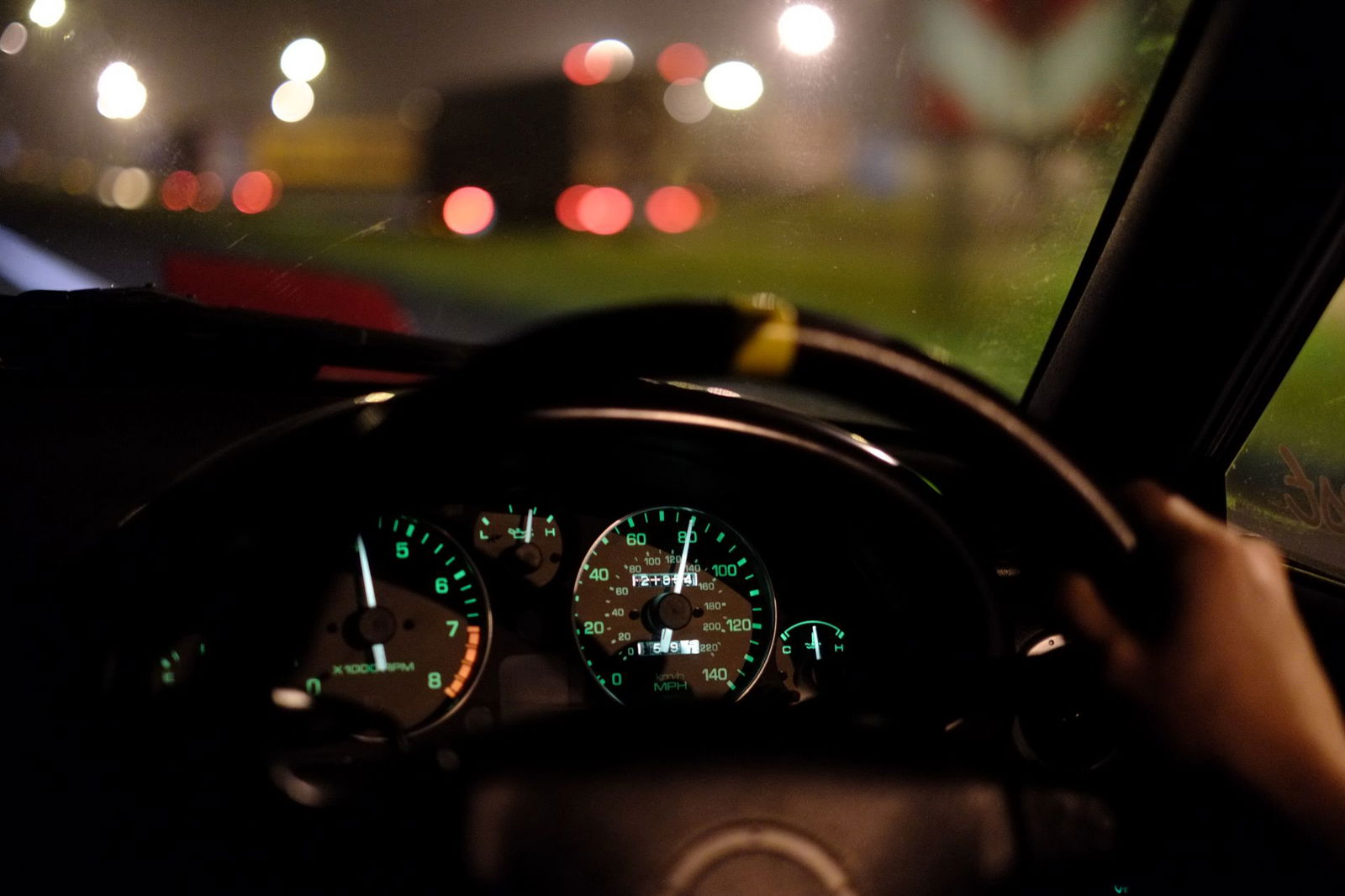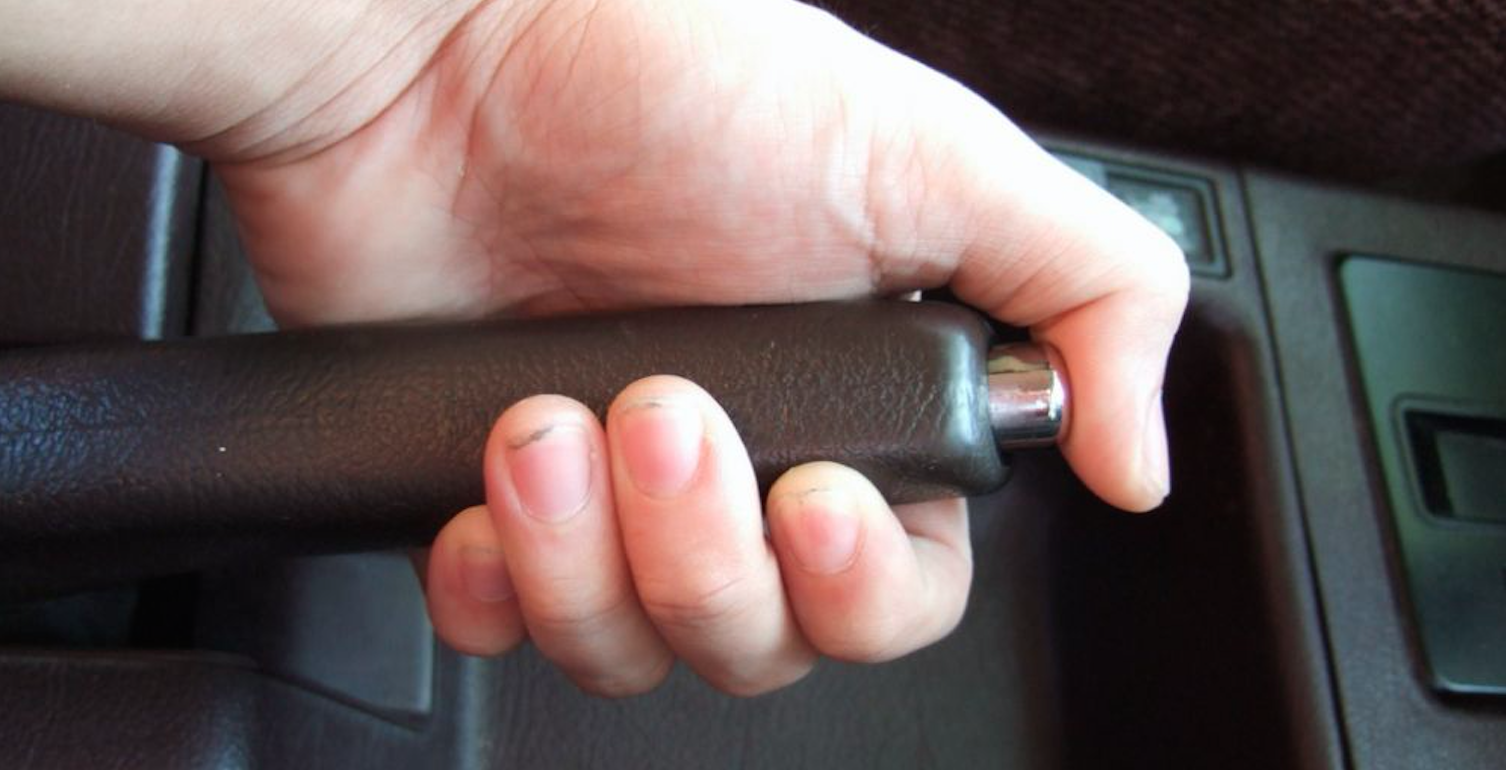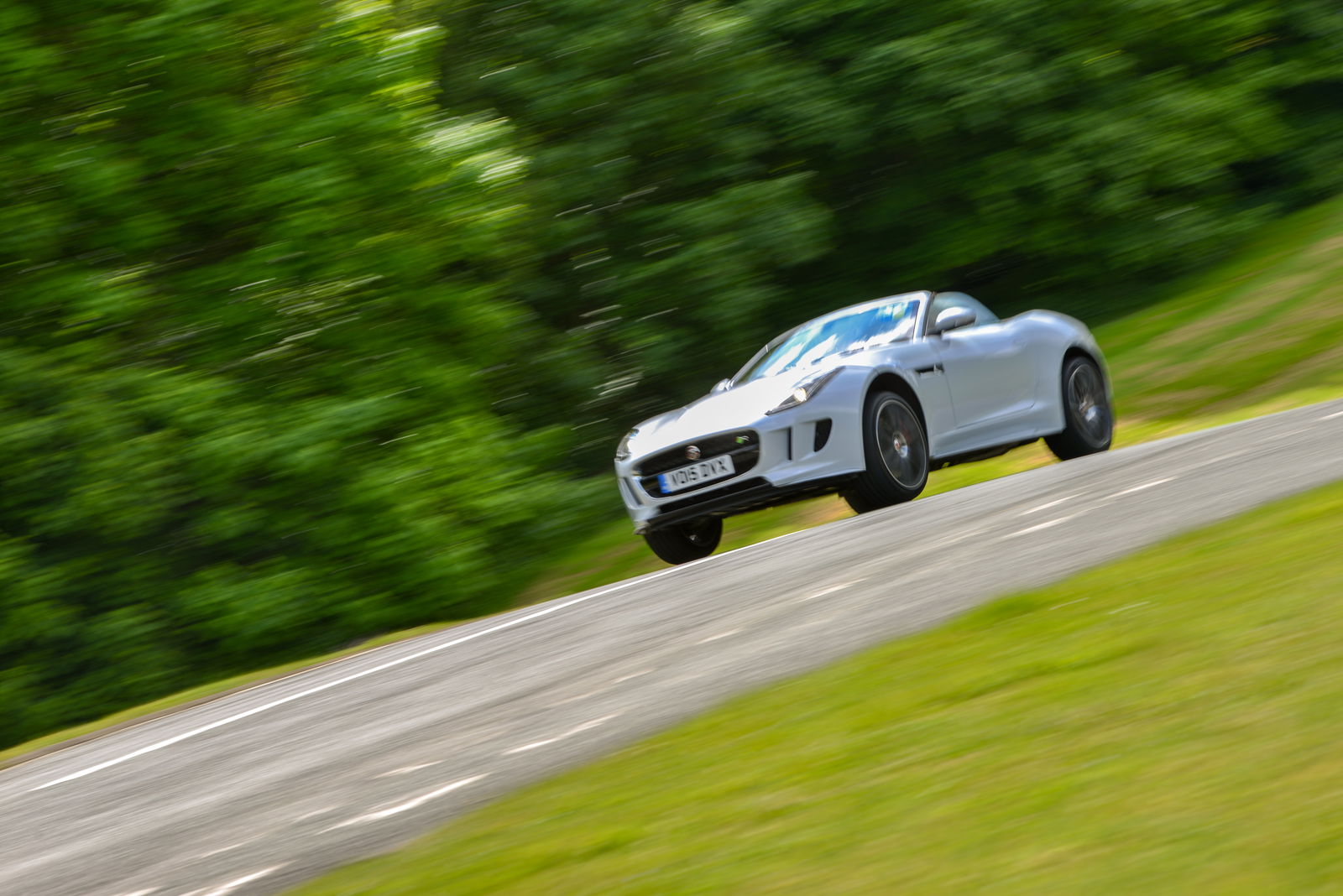6 Things To Unlearn From Your Driving Test

1. 'Feeding' the wheel

The ‘pull-push’ method, also known as ‘feeding the wheel’, is argubly the most important ‘driving test’ technique. It’s a method that has been taught for years; even the police force use it when training Class 1 drivers. The idea behind the technique is that it allows you to keep both hands on the wheel at all times, therefore making you a ‘safer’ driver.
Unfortunately, this is nothing more than ill-advised rhetoric. Feeding the wheel is inefficient, outdated and in some circumstances, it can be dangerous. For example, imagine that you’re on a country road and you approach a blind corner. You enter what you think is a shallow bend, but as you turn in, the corner starts to decrease in radius. To avoid running wide, you need to add more steering lock quickly but smoothly; something you can’t do effectively when feeding the wheel.

If you attempt to ‘pull and push’ the wheel, you’ll end up making jagged inputs at a point where the car is already unstable. And if the corner continues to tighten, the push and pull technique will be too slow, and you’ll end up running wide.
Instead, if you keep both hands on the wheel and cross your arms, you maintain that vital connection with the wheel. You can feel what the front end is doing and you can add steering input progressively. There’s a reason why ARDS qualified racing instructors ask first time track drivers to keep their hands at nine and three.
2. Constantly applying the hand-brake

The handbrake is your best friend on the driving test. Almost every time you stop, you’re required to use it; even after the emergency stop! Thankfully, most drivers come to their senses and drop this ‘bad habit’ once they’ve passed their test.
In reality, there’s no need to handbrake every time you come to a halt. For example, if you’re in stop-start traffic, the foot brake will usually suffice. And if you need to make an emergency stop in a pile-up situation, the last thing you should do is apply the handbrake. Once stopped you should check your mirrors, put the car in gear and pull over to the side.
Don’t get us wrong, we’re not saying that you should never use it, but you don’t need to apply it every time you stop.
3. Checking your mirrors at pre-determined intervals

Every time you set off you should theoretically conduct a six-point check. The process goes (in the UK): look over your left shoulder, check your left exterior mirror, check your rear-view mirror, check the road ahead, check your right mirror and then finally look over your right shoulder. On your test you need to make these checks look super obvious to avoid incurring any minor penalties.
Our problem with this technique is the fact that it turns situational ‘awareness’ into a box-ticking exercise. And as we all know, when you do something simply for the sake of it (in this case, pleasing an instructor), the process ceases to have a meaningful effect.
4. Don't flash other road users

The Highway Code states that you should ‘only flash your headlights to let other road users know that you are there. Do not flash your headlights to convey any other messages’. As a result, you cannot flash your headlights on your driving test, and you cannot react to someone else flashing their lights at you. Now, we understand that in some circumstances this form of communication has the potential to be hazardous, but in most cases we find it to be rather helpful.
Flashing people to say thank you or to let them into a line of traffic is a daily occurrence for most of us. And whatever you might have been told, flashing your lights in the UK is not illegal.
5. Speed is the enemy (it's actually your friend)

Controversially, the driving test in the UK fails to incorporate any form of motorway driving. The majority of your lessons will take place in busy towns or cities where your maximum speed will be limited to 30mph. As a result, young drivers often view speed as the enemy. This isn’t a major problem on crowded streets, but it can play havoc when it comes to driving on motorways.
When merging onto a faster road, it’s vital that you accelerate to match the speed of the adjacent traffic. Unfortunately, learner drivers often get intimidated and slow down on on-ramps. Not only is this dangerous to the learner driver, but it’s also dangerous to drivers travelling at high speed on the main road. If only they knew that mashing the loud pedal is actually safer.
6. Constantly checking your speed

Speeding during your driving test can result in instant failure. As a result, most learners spend the majority of their assessment staring at the speedometer. This is because the test is nothing more than a box-ticking exercise: as long as you’re under the limit, you’re deemed to be safe.
Unfortunately, this is not the case. If you’re doing the speed limit, but not focusing on the road ahead, this is equally (if not more) dangerous than speeding. Thankfully, the more you drive, the more accustomed you become to multi-tasking (checking speed, road conditions and surrounding traffic).
Finally, we want to know from you guys, what pointless things were you told during your driving lessons? Let us know in the comments below!













Comments
I guess my driving teacher was more modern, I was told to steer like the gif Ben Anderson posted below, only needed to apply the handbrake after parking or while doing a hillstart, instead of “ticking boxes” while leaving I needed to make sure I knew everything that happened around me, never heard of not flashing other road users, I needed to make sure I synced my speed with the other traffic, whatever that speed was, and last but not least I was never told off for driving a bit too fast as long as that speed was with the flow of the other traffic.
I live in the Netherlands though, we also drive on the correct side of the road. ;)
Here in scotland, you get a minor if you don’t put your seatbelt on with 2 hands. I didn’t believe my instructor but the examiner confirmed it…
Why the hell would I put on the Handbrake everytime I stop? My driving instructor would probably killed me if I used the handbrake on a regular intersection… There is no point in it. What is the footbrake for then?? [German teenager, currently in driving school]
Neil I probably agree with your tagline, but the test is not archaic for the reasons you mention.
People do not learn how to drive on their driving test, all the work is done during their lessons, and some of the approaches you mention are based on a more traditional approach.
Steering
Steering is very personal and a good trainer will support the pupil in finding ways to control the car given the circumstances they find themselves in. Pull/Push is not best practice at all times, I know for example I don’t Pull/Push at slow speeds. Steering is about keeping control of the car, placing it where you want it at the right time and safely.
The Handbrake
It’s certainly not a requirement to apply the handbrake after an ‘emergency stop’, only if it’s required (facing up/hill)
If used well is a very safe useful tool, but it’s not required all the time and certainly not for every stop.
Mirrors
Six Point Check……!!! This sounds very much like someone fresh from their training college.
Mirrors need to be effective, yes they are used as part of your Mirror Signal Manoeuvre (MSM) routine but who wouldn’t check their interior/exterior mirror before changing lanes for example.
For moving away I would be coaching someone to check their mirrors as required and then check their blind spot, in some cases an all-round check maybe required, but not all the time. I would support pupils in understanding when it’s needed so they move away safely in all conditions.
Split post to allow for content!
Flashing Headlights
This is a tricky one. I will hold my head up here and say. If a pupil flashed their headlights on a driving test they will not fail!!!
However. They will need to clearly state they have checked it’s safe and that no other driver will be confused by their actions.Personally as an advanced driver I very rarely get into situations where I need to flash my lights as I plan further ahead to avoid confrontation.I wave my hand to say thank you, and at night I merely switch my headlights to sidelights to avoid dazzling drivers.
Speed
I totally agree.
It’s a shame that more drivers don’t take up motorway tuition and schemes post-test.
Constantly checking your speed.
Speeding during your driving test can result in instant failure - It can but it would depend on the circumstances. Most new drivers will have an incline to their speed and control of the car once they sit the test. If they are still checking the speed constantly when they take their test then perhaps they are not ready.
Small fluctuations in speed will draw the examiners attention, long periods (yet small) over the limit may results in a fail as the candidate has made no attempt to adjust. Excessive speed is not safe so rightly someone would not pass the test.I hope my comments have cleared things up a little. I’ve been an instructor for over 12 years and passed numerous advanced test and much of my training is about coaching students not telling them how to do things but rather supporting them to find solutions and analysis their own standards.
In Estonia some driving schools teach people to stay in gear and hold the car on the clutch on a hill.
In germany it’s possible to fail your test if you’re driving to slow, e.g. you’re allowed to drive 50km/h and you drive less then 40km/h without a significant reason, you will probably fail your test. If you are going 5 to 10km/h more then allowed on a country road or a motorway it is ok, but if you’re going with 80km/h when it’s allowed to do 100km/h or more you will definetly fail your test.
And it’s impossible to not visit the autobahn during your test, so you have to go fast;)
Welcome to germany, welcome to the autobahn
I love Germany for that simple reason
in portugal people flash theyr headlight if the cop are doing a stop operation .
Go to a track day and you will learn that the “push-pull” method is very valuable, always having one hand on the wheel and never crossing arms. That way if you do get caught up and need to make more input you are able to. If your “racing instructor” tells you to cross arms he needs to be sacked.
You’re taught in germany, that if you´re unable to merge to the motorway you have to stop at the end of the margin line. this might be right at a few place due to obstacles, but mostly extremely dangerous. For example you try to merge but fail, so you have to slam the breaks to stop at the end of the margin line. The person behind you will crash into you before you come to an stop.
I know my english is bad….
Pagination